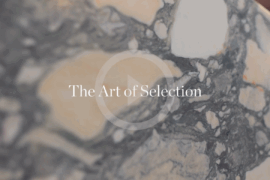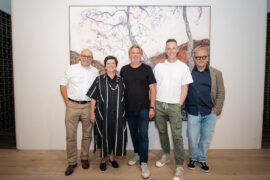The director of Seoul’s International Design Trend Center talks about the success and challenges facing Korean design today.
September 6th, 2011
“Korean design is truly emerging not only in Asia but also internationally,” says Prof Ken Nah.
“The advent of digital technology, the government’s efforts to promote design and the success of the business sectors have made Korean design competent in the global arena.”

Smart Pebble by young South Korean studio DesignMAXX
Prof Nah was recently in Singapore to judge the international red dot award: design concept (also see our interview with red dot judge Song Kee Hong).
Besides his role as director of the International Design Trend Center in Seoul, Prof Nah teaches design research and management at Hongik University’s International Design School for Advanced Studies.
“Generally speaking, the Korean designers, I think, are outstanding in the emotional aspects of design. However, they need to be more logical and fluent in communicating with people from other disciplines, such as marketing and business, technology and engineering, and the decision makers,” says Prof Nah.
“That is why I have taught courses on design research focussed on reading papers and on qualitative research through which they can improve the empathy and the skill of synthesis.”

Tea diver by young Seoul-based studio Abel and Partners has been a hit worldwide
Apart from research, Prof Nah feels that design management is fundamentally important and “a must for designers” moving forward.
“The purpose of design management is two-fold. Firstly, it is important for the CEOs to understand the potential and value of design and design thinking. Once the CEOs are in favour of design, they could do a lot more things than expected. I think this is the most effective way of increasing the value of design in the business sectors.
“The other is that the designers and design students have to understand the management and the context of business, because design is different from art, ” says Prof Nah.

WDC Seoul 2010
He candidly admits that ’Korean design’ is difficult to define as it focuses on reaching out to the international market. “The best examples we have are TVs, mobile phones and cars,” he says.
“We cannot survive with just the domestic market only.”

Seoul Design Assets exhibition
Academically, though, he feels that there have been several approaches to identify Korean design.
“I think one of the best examples was Seoul Design Asset, a project executed during WDC Seoul 2010,” says Prof Nah, who also served as director general for WDC.

Seoul Design Assets exhibition
Seoul was only the second city after Torino, Italy to win the WDC or World Design Capital bid.
During its 1-year term, each titled city is tasked to champion design as a means to improve social, cultural and economic aspects of life for its citizens through a host of initiatives and to demonstrate its design leadership.
One of many programmes held during the year-long campaign, Seoul Design Asset presented 600 years of design history via high-tech multimedia technologies to rediscover and reevaluate the traditions and values of Seoul design.
“I think Korean design is very unique in terms of quality and quantity as well. Every year, about 25,000 (good) designers come out of schools, which is 2nd next to the USA,” says Prof Nah.
“We also have a good collaborative system among government, business, and education… In a nutshell, our uniqueness stems from the team spirit of all stakeholders in design.”
INDESIGN is on instagram
Follow @indesignlive
A searchable and comprehensive guide for specifying leading products and their suppliers
Keep up to date with the latest and greatest from our industry BFF's!

Merging two hotel identities in one landmark development, Hotel Indigo and Holiday Inn Little Collins capture the spirit of Melbourne through Buchan’s narrative-driven design – elevated by GROHE’s signature craftsmanship.

For those who appreciate form as much as function, Gaggenau’s latest induction innovation delivers sculpted precision and effortless flexibility, disappearing seamlessly into the surface when not in use.

CDK Stone’s Natasha Stengos takes us through its Alexandria Selection Centre, where stone choice becomes a sensory experience – from curated spaces, crafted details and a colour-organised selection floor.

London-based design duo Raw Edges have joined forces with Established & Sons and Tongue & Groove to introduce Wall to Wall – a hand-stained, “living collection” that transforms parquet flooring into a canvas of colour, pattern, and possibility.
Leading landscape and outdoor furniture & hardware designer William Dangar provides a custom design and construction service for the project, launched earlier this year.
Designed originally for DOLCE and GABBANA, The UFO table is a luxurious, sculptural piece. Its size is customisable from a wow reception table to a WOW boardroom table. Dimensions: Various Delivery time: 16 weeks Applications: High end residential and contract Variations: Dining and coffee table height Finish: Tops: Oak / Oak stained / Wenge, Underside […]
The internet never sleeps! Here's the stuff you might have missed

BLP’s new Sydney Children’s Hospital, Randwick building brings together paediatric care, family-centred design and Australia’s first Children’s Comprehensive Cancer Centre in a major addition to the Randwick Health & Innovation Precinct.

Eco Outdoor recently brought together developers, sustainability experts and local architects such as Adam Haddow to discuss design fundamentals, carbon targets and long-term thinking.